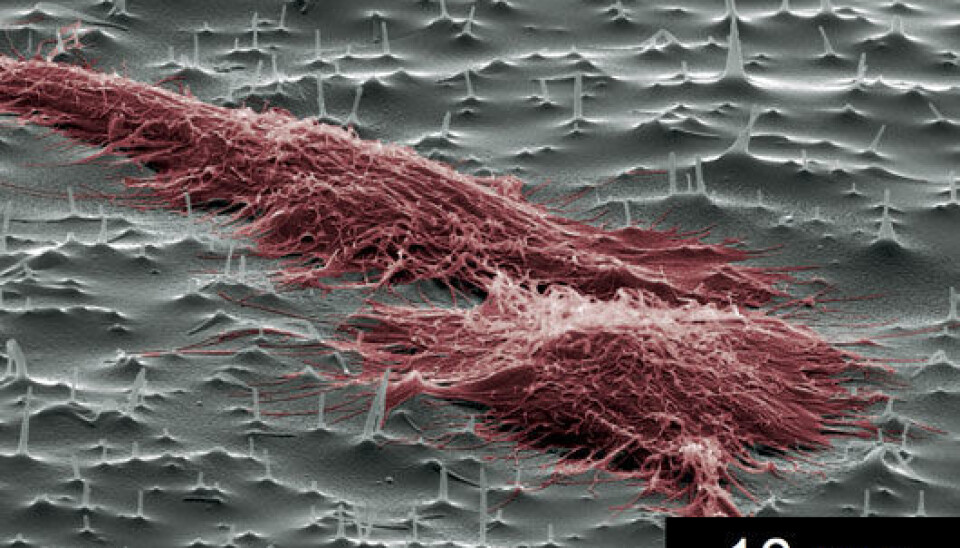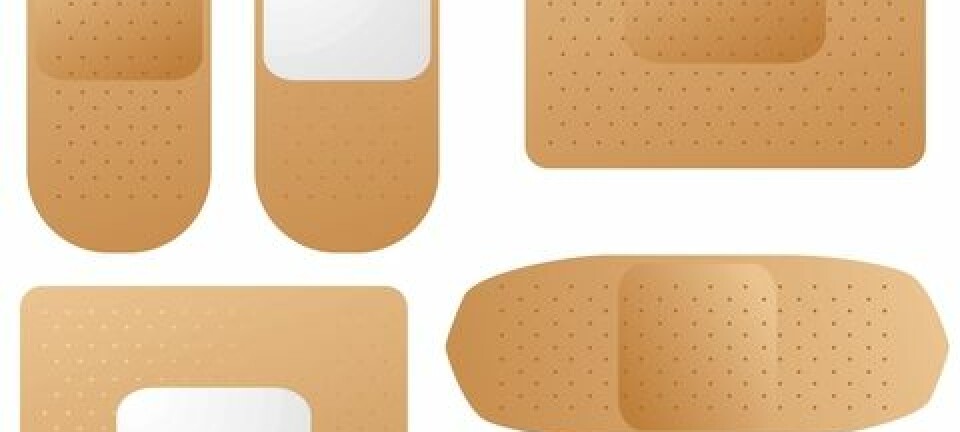An article from Norwegian SciTech News at NTNU

Nano-needles for cells
Tiny needles can force medicine into cells, even when they resist taking it.
Denne artikkelen er over ti år gammel og kan inneholde utdatert informasjon.
Physicist Pawel Sikorski and his group are making beds of nails on a miniature scale – a plate covered in nano-needles designed to puncture individual cells.
It sounds a bit painful, but none of these needles will be going directly into your body, because the test subjects are cells under the microscope. The researchers are working to develop advanced tools to understand what goes on inside the body’s cells.
“These nano-needles will make medical research more efficient,” he says.
Cells gobble up medicine
One way to understand how different molecules influence cell function is to deliver the molecules directly into cells and study the effect. Traditionally, research is this field is done by first placing many different substances on a glass or other surface to study their effect on the cells of interest.
The substances might be a potential anticancer drug that works by affecting the cell’s genetic material, or a molecule that will switch off a particular gene inside the cell. The researchers then cultivate cells on top of the potential medicine. Some of the cells will absorb the medicine, and the researchers can monitor the changes in the cells caused by the different drugs. But in many cases this method does not work very well, because some of the cells don’t want to take their medicine.
“With the new method, we attach molecules of the drug being tested to the tips of the nano-needles, and then inject it the same way you would with an ordinary medical syringe,” says Sikorski.
Grey grass and smart cells
The researchers create the nano-needles in a small ceramic oven. In goes something that looks like aluminium foil with a small burnt patch on it (which is actually a wafer-thin piece of copper), and two hours later at 500 degrees, the copper reacts with oxygen in the heat, creating copper oxide.
The final product looks like grey grass under the microscope, but the grass is actually the nano-needles. The next step is to put something similar to tallow onto the needles so that they can be removed from the copper plate. Glass is glued to the bottom, so that everything is transparent. The finished product looks like a small, round bed of nails. Researchers can now put cells on top of the nano-needles, and see if test drugs can be injected into cells.
But some cells are trying to fool scientists. While some cells readily impale on the nano-needles, others encapsulate the needles and grow around them.
“We are currently working on finding the correct methods to insert the needles, to ensure that all of the cells are impaled,” says Sikorski.
Nobody else in Norway is making nano-needles like these. The NTNU researchers are also the first group in the world to develop an even, larger-size copper surface with nano-needles.
































